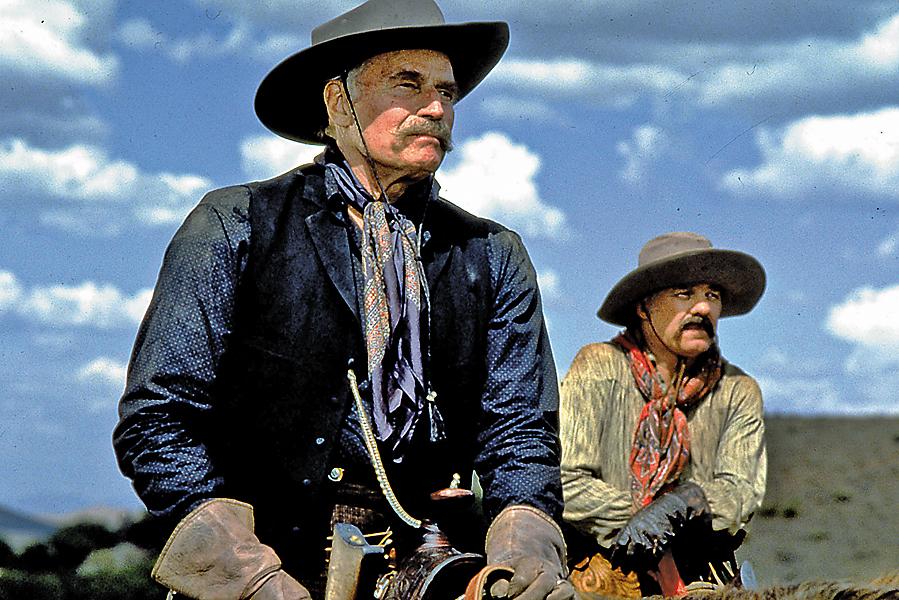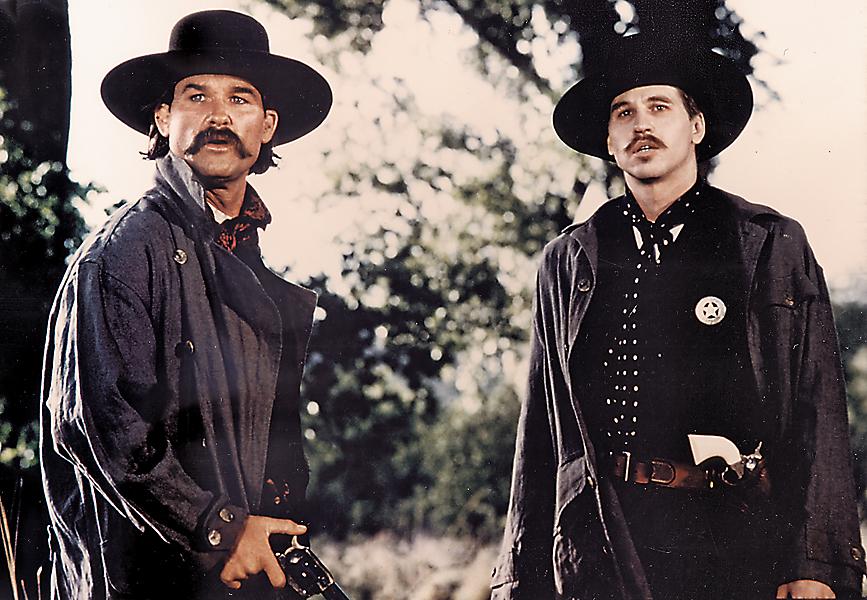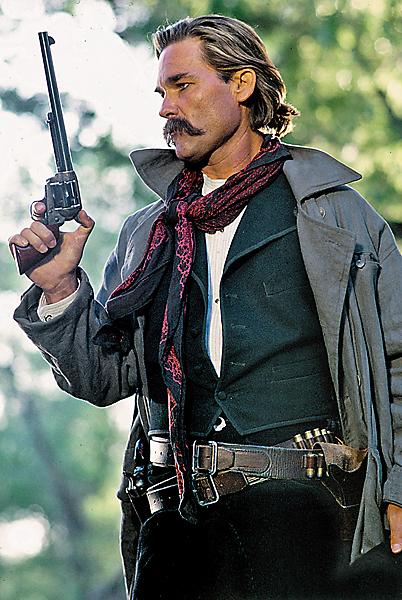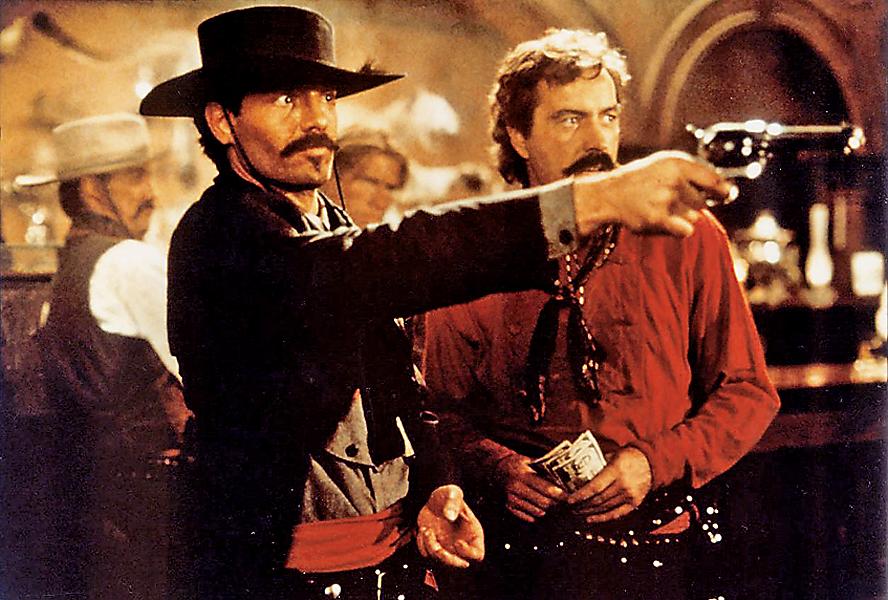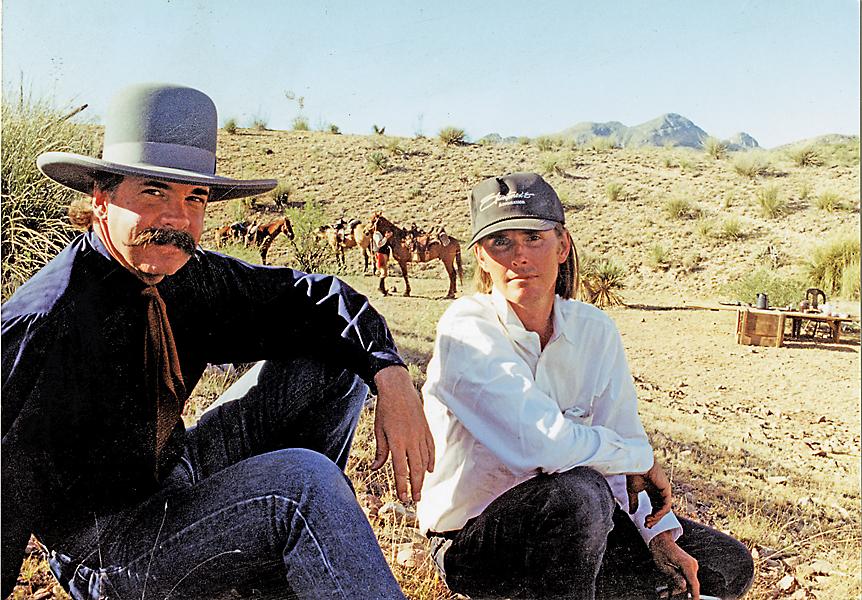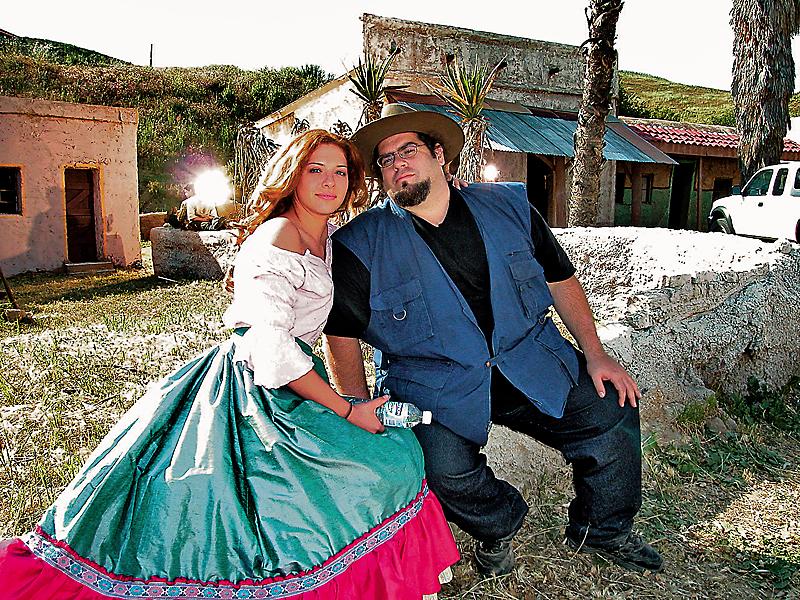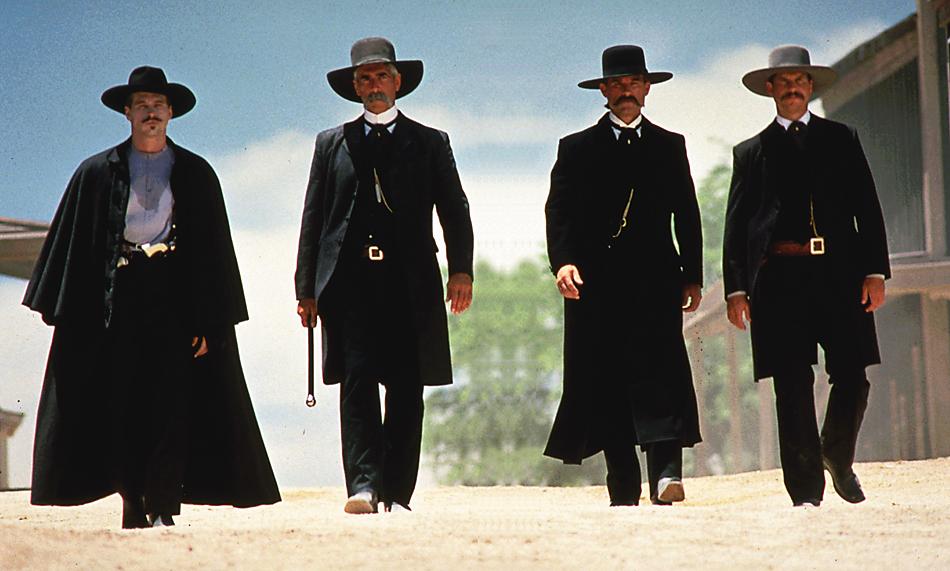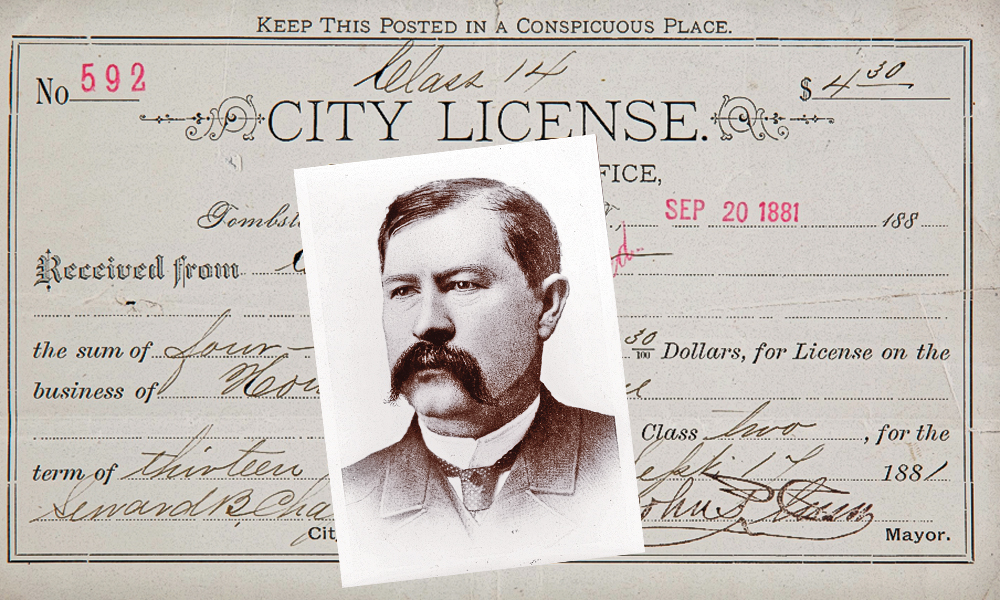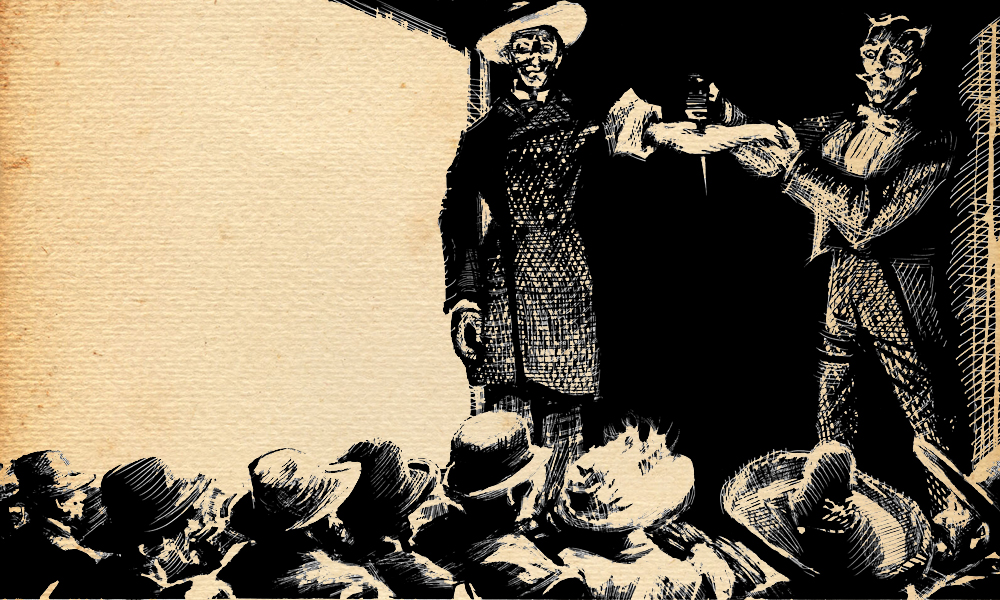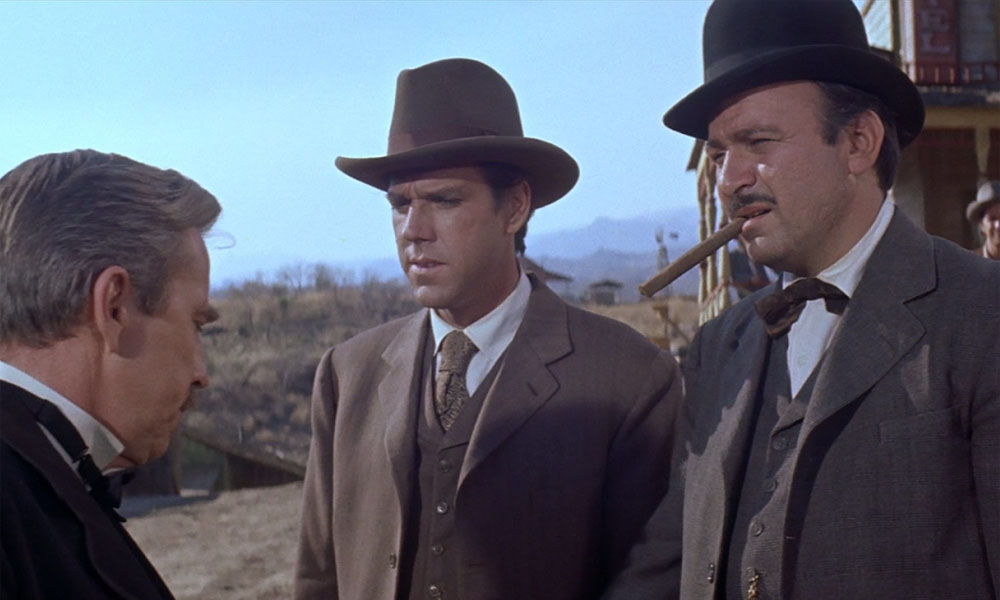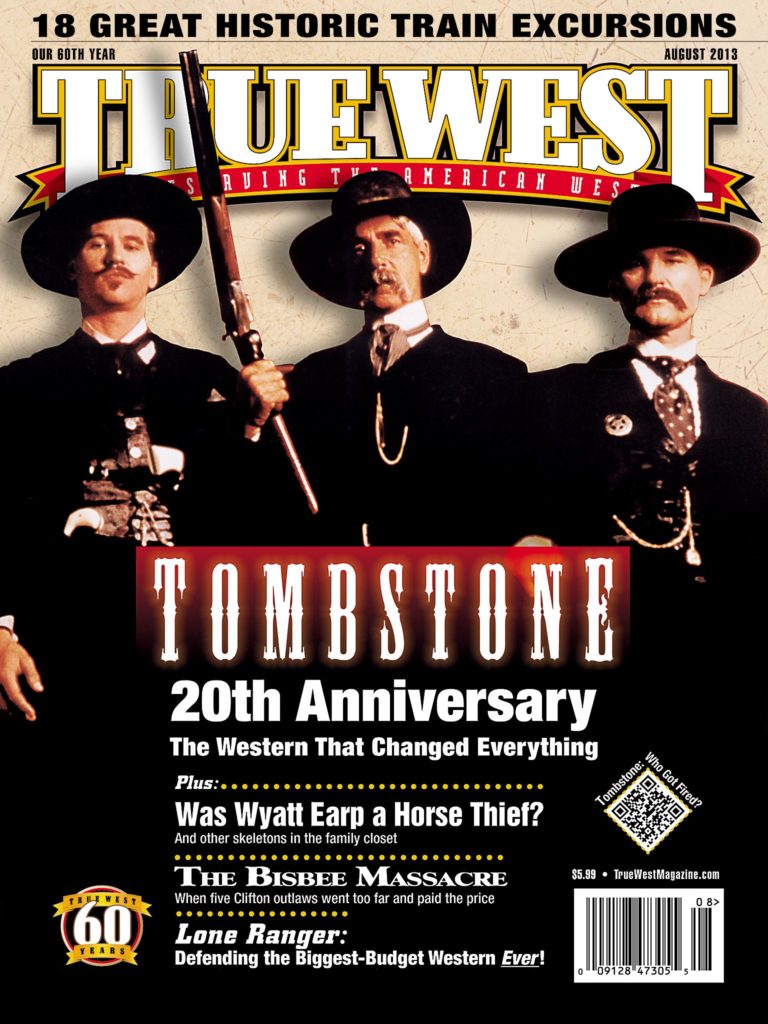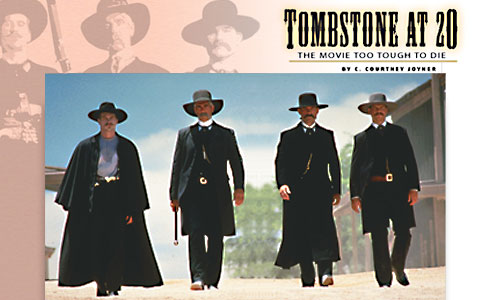 A lifelong Western and Horror movie fan, with an intense interest in history and weapons, screenwriter John Fasano was actually focused on Bruce Willis, not Wyatt Earp, when Hollywood fate took a hand and he found himself suddenly working on what would become a Western classic, 1993’s Tombstone.
A lifelong Western and Horror movie fan, with an intense interest in history and weapons, screenwriter John Fasano was actually focused on Bruce Willis, not Wyatt Earp, when Hollywood fate took a hand and he found himself suddenly working on what would become a Western classic, 1993’s Tombstone.
“This whole thing started as a real ‘movie moment.’ I was writing Die Hard 3, and George Cosmatos was preparing Shadow Conspiracy, and we’re both at the Cinergi offices in Santa Monica. I’m standing in the hallway, and I meet George for the first time in my life. I tell him that I really liked Of Unknown Origin and The Cassandra Crossing, and one of us says, ‘Oh, we really should work on something together.’ Typical stuff. The door to [Hollywood Pictures’ President] Andy Vajna’s office opens, and he says, ‘You’re directing Tombstone, and you’re re-writing it!’”
I knew George, who passed away in 2005, and I have been friends with John for years, and all of us have talked about Tombstone more than once. But as the film’s cult status has grown, so has the supposition about its making, which was a great reason for me to get together with John over lunch and relive a little history of one of the most popular Westerns of the last 20 years.
John laughs as he recalls that day: “An hour after we meet, we’re on a private plane, flying to Arizona. I’d never read the script, so I’m reading it before we land.”
In Arizona, Fasano and Cosmatos walked into the chaos that had erupted around Tombstone: “All the cast and crew are in a room, and they want to kill each other. Andy says, ‘Here’s your new director, and your new writer.’ Everyone was arguing against us, and it was huge. The movie was going to fall apart right there. Kurt Russell supported the idea of using George, and that calmed everyone down.”
What had brought everyone to this state was the firing of the film’s screenwriter and original director Kevin Jarre. Jarre had written the screenplay of the Oscar-winning Glory, and this was to be his first feature behind the camera. The enormous production would have taxed an experienced director, but for a first timer, the film proved to be overwhelming. Jarre was soon behind schedule, placing Tombstone in jeopardy.
Jarre had already filmed the scenes with rancher Charlton Heston, and Fasano saw the problem right away. “He was only shooting master shots, and [Producer] Buzz Fietshens told Kevin he couldn’t do that,” John says. “Kevin said, ‘If I shoot coverage, then [the studio] can cut my vision.’ Buzz told him, ‘Kid, you can’t keep directing this movie if you only shoot master shots.’”
Conflict over Jarre’s direction lasted another day before he was let go and Cosmatos landed in the director’s chair. But then, they had to deal with the issue of Jarre’s fine, over-long script that had to be cut to fit the demands of the shooting schedule.
Making changes in a screenplay already in production is a delicate operation that Fasano knows well. “I thought my job was to make sure that we didn’t ruin Kevin’s script,” John says. “I wasn’t hired as a writer; I was hired as a producer. I didn’t want writing credit. I’d call the actors into my hotel room, and say, ‘Okay, Bill Paxton, why did you sign on for this role?’ They’d say it was because of this scene they really liked. So, if I had to cut the scene, I made sure to put that dialogue somewhere else in the script. I wanted to make sure those things weren’t cut from the movie, they were integrated. Val [Kilmer] said I could cut all his lines, because he had his little cup and would steal every scene anyway. Of course, we didn’t [do that]. Everyone cooperated, except Sam Elliott, who said ‘If you cut a word of my dialogue, I’ll kill you.’”
If that was Virgil Earp’s attitude, brother Wyatt was thinking of Tombstone differently, “The fact is, there’d be no Tombstone without Kurt Russell. He kept the show together when it was going to fall apart. Kurt would come to my room with Val, and we’d talk about what we were going to shoot the next day, as I was re-writing it. He’d always say, ‘No, give that line to Morgan [Paxton], because this isn’t the Kurt Russell show.’ He’d always have me throwing scenes to the other characters he was with. Kurt really wanted an ensemble piece, and one of the ironies is that George shot it like a Kurt Russell vehicle.”
That nature of this creative work has led to speculation about the film’s direction. “Now, if Kurt secretly directed the movie, I didn’t see it,” says John, commenting on the story True West first broke in 2006, when Russell admitted to us that he actually directed Tombstone. “George was the director. I can only say what I witnessed. Some online boards talk about a secret version of Tombstone, Kurt’s version. His cut. No. We shot my shooting script, shot it all. The only things not there are the deleted scenes on the DVD. There are no other scenes.
“Kevin’s dead now, so I could say I secretly wrote his script, but that’s not true. There were times that I was going to cut lines for length, and Kurt would defend them. Everything that’s in that movie stayed because the people involved wanted to protect Kevin’s script.
“If Kurt Russell hadn’t been supportive of George and me, the film would have fallen apart. George is gone too, but he took this movie very seriously, and some people say the guy who did Rambo couldn’t have directed it. But George took it over and got it done. We all worked together. Six weeks, and it was hot, hard work, but it was the best experience. Everyone was having the time of their lives on that movie, and so did I.”
C. Courtney Joyner is a screenwriter and director with more than 25 produced movies to his credit. He is the author of The Westerners: Interviews with Actors, Directors and Writers.
Photo Gallery
– By Bob Boze Bell –
– Courtesy John Fasano –
– All Tombstone photos courtesy Buena Vista Pictures –


